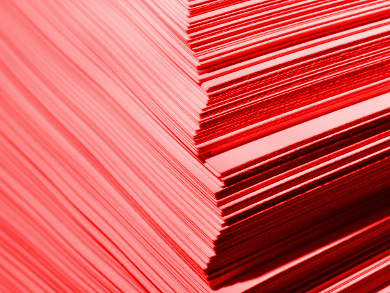Two-dimensional materials can have completely different properties from the bulk material. 2H-TaS2 (tantalum(IV) sulfide), for example, is a quasi-two-dimensional material which exhibits superconductivity. Two-dimensional interfaces between materials can also cause interesting and useful effects, such as interface superconductivity.
Tianquan Lin, Shanghai Institute of Ceramics, Chinese Academy of Sciences, Fuqiang Huang, Shanghai Institute of Ceramics, Chinese Academy of Sciences, and Peking University, Beijing, China, and colleagues have synthesized randomly stacked TaS2 nanosheets with improved superconductivity compared to the parent 2H-TaS2. The team synthesized LixTaS2 powders by soaking 2H-TaS2 in an n-butyl lithium solution. The resulting LixTaS2 crystals were chemically exfoliated to give a colloidal suspension of monolayer TaS2. Vacuum filtration of the suspension caused a random, twisted restacking of the TaS2 nanosheets.
The restacked nanosheets showed superconducting behavior at Tc = 3 K, an improvement over the parent 2H-TaS2 (Tc = 0.8 K) The researchers attribute this effect to the interfaces between the nanosheets, which increase electron delocalization and contribute to superconductivity.
- Enhanced Superconductivity in Restacked TaS2 Nanosheets,
Jie Pan, Chenguang Guo, Changsheng Song, Xiaofang Lai, Hui Li, Wei Zhao, Hui Zhang, Gang Mu, Kejun Bu, Tianquan Lin, Xiaoming Xie, Mingwei Chen, Fuqiang Huang,
J. Am. Chem. Soc. 2017.
DOI: 10.1021/jacs.7b00216



